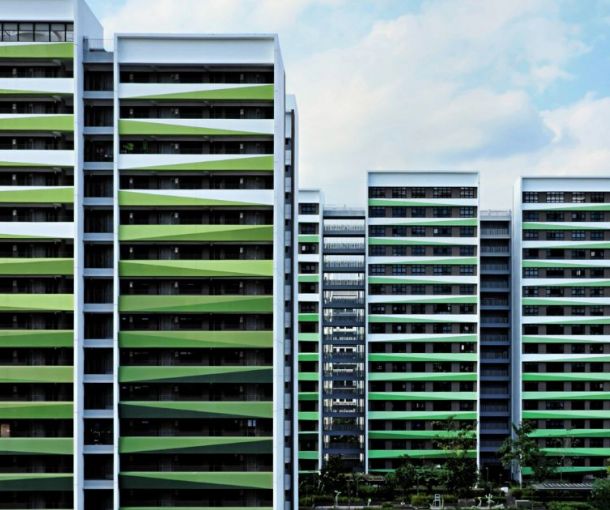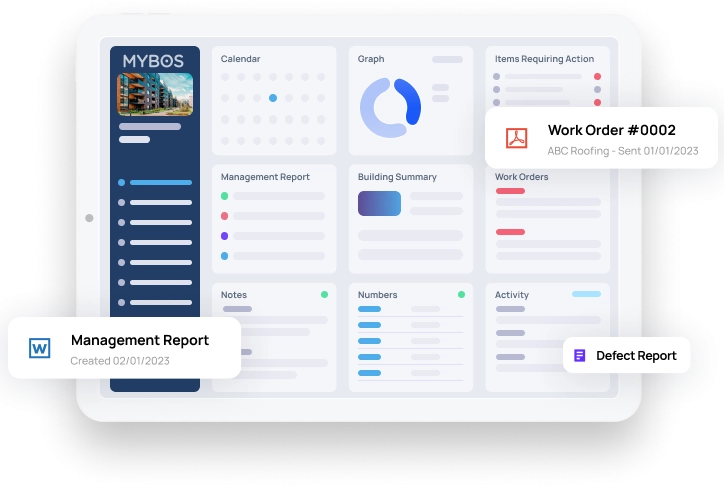
Mastering Tenant Communication: Tips for Building and Strata Managers
Effective communication is the backbone of successful building and strata management. Whether it’s keeping residents informed, resolving maintenance issues, or managing expectations, clear and consistent communication fosters trust and strengthens relationships. In today’s fast-paced property environment, building and strata managers must do more than just react—they must proactively engage with tenants to ensure smooth day-to-day operations.
As buildings become more complex and tenant expectations continue to evolve, traditional communication methods like noticeboards and paper newsletters are no longer enough. Residents now expect fast, transparent updates—delivered through the digital channels they use daily. From email and SMS alerts to mobile apps and portals, modern tools are reshaping how managers interact with their communities.
As resident expectations continue to evolve, particularly in larger build-to-rent or multi-occupant strata complexes, there’s increasing pressure on managers to adapt and innovate their communication strategies.
Below, we break down the essential best practices and digital tools that can help streamline your communication, foster tenant trust, and reduce the administrative burden on your team.
1. Set the Standard Early with Clear Resident Onboarding
Communicating with tenants effectively begins the moment they move in. The onboarding process is your first opportunity to establish expectations and create a positive first impression. A detailed welcome pack or digital orientation that outlines:
- Key contacts and responsibilities
- Emergency procedures
- Rules and guidelines (waste disposal, noise, pets, etc.)
- Amenities booking and maintenance request processes
Can prevent future issues and save time answering repetitive queries. Consider digitising this information within a resident communication platform or app to keep it easily accessible.
Understand more on how How Tenant Expectations Are Shaping the Next Generation of Build-to-Rent Projects
2. Use Multiple Channels But Stay Consistent
Modern tenants expect communication to be convenient and accessible. While email remains a standard, platforms like SMS alerts, push notifications, and in-app messaging are becoming more common. Regardless of the method, ensure your messaging remains consistent in tone, language, and accuracy.
Savills Research highlights that PropTech innovations are reshaping the tenant experience. Smart buildings increasingly rely on mobile engagement platforms to streamline communications, ensuring a unified experience whether a tenant is using an app, email, or digital screen across the building. These tools dramatically enhance responsiveness and deliver more cohesive tenant interactions.
A centralised property communication software allows for streamlined multi-channel messaging, ensuring that urgent announcements (e.g., water outages, lift maintenance) are delivered quickly to the right people.
3. Be Proactive, Not Just Reactive
The best tenant engagement strategies involve proactive communication. Don’t wait for complaints to arise, keep residents informed about upcoming maintenance, scheduled upgrades, or community events. This transparency helps manage expectations and demonstrates professionalism.
Proactive updates also reduce anxiety during disruptive situations like renovations or access restrictions. A simple notification or FAQ update via your building app can prevent dozens of individual queries.
For more ideas, read our blog on How to Ensure Your Tenants Stay in Your Building.
4. Embrace Tech Tools to Simplify Admin
Manual tracking of requests, paper notices, and unstructured email threads are outdated. Embracing modern strata communication tools or strata manager tips on software can vastly improve communication workflows, documentation, and tracking.
With resident experience platforms like MYBOS, managers can:
- Send bulk messages or targeted notices
- Track communication history by unit or tenant
- Automate routine messages like lease expiry or inspection reminders
- Integrate service request updates with vendor timelines
Workplace Insight emphasizes that the most successful owner‑occupier communication strategies now rely on integrated tech platforms. These systems centralise notice distribution, automate workflows, and ensure consistent messaging, helping teams manage both routine and urgent communications smoothly and transparently. This not only enhances professionalism but also reduces human error.
5. Centralise Requests and Feedback
Tenants should know exactly where and how to lodge issues or provide feedback. A centralised maintenance portal or digital helpdesk prevents requests from slipping through the cracks and enables better accountability.
Managers should respond promptly, ideally within 24-48 hours, even if it’s just an acknowledgment. Delayed responses can damage trust and tenant morale, especially in urgent matters.
Learn how platforms like MYBOS are enhancing tenant experience through amenity booking tools.
6. Personalise When Possible
While automation can reduce admin, don’t overlook the power of a personal touch. Whether it’s a birthday card, a thank-you email after resolving a long-standing issue, or remembering tenant preferences during upgrades, personalising your approach can strengthen your relationship with residents and enhance tenant satisfaction.
Mirvac values a personalised resident experiences through its Resident Experience Program, where teams train staff to deliver tailored interactions, acknowledge milestone events, and maintain personal contact across the tenant lifecycle. These human-centred service strategies help create a purpose-driven residential environment that feels like more than just a place to live
7. Measure and Improve
Finally, consider regular surveys or feedback loops to measure tenant sentiment and identify communication gaps. What’s working? What do tenants wish was better?
Sourceable reports that sustainable and well-rated properties often deliver higher tenant satisfaction and retention. Their long-term study shows rent, renewals, and tenant loyalty improve in buildings that prioritise tenant experience which starts with listening and acting on feedback.
Regular reviews can help refine your building manager communication strategy over time and provide data to support resource allocation or technology investment.
Turning Building Communication Challenges into Wins
Mastering tenant communication isn’t just a nice-to-have—it’s a critical part of effective building and strata management. Clear, timely, and respectful communication helps prevent misunderstandings, improves compliance with building rules, and fosters a greater sense of community among residents. When tenants feel heard and informed, they’re more likely to stay engaged and satisfied.
By leveraging digital tools, setting clear communication protocols, and being proactive in your outreach, managers can reduce friction, increase transparency, and deliver a more seamless resident experience. With a thoughtful communication strategy in place, you’ll not only strengthen your day-to-day operations but also build long-term trust and loyalty across your portfolio.
Looking to streamline your communication and simplify building management? Book a demo with MYBOS to discover how our all-in-one platform supports smarter, faster, and more effective tenant communication.




